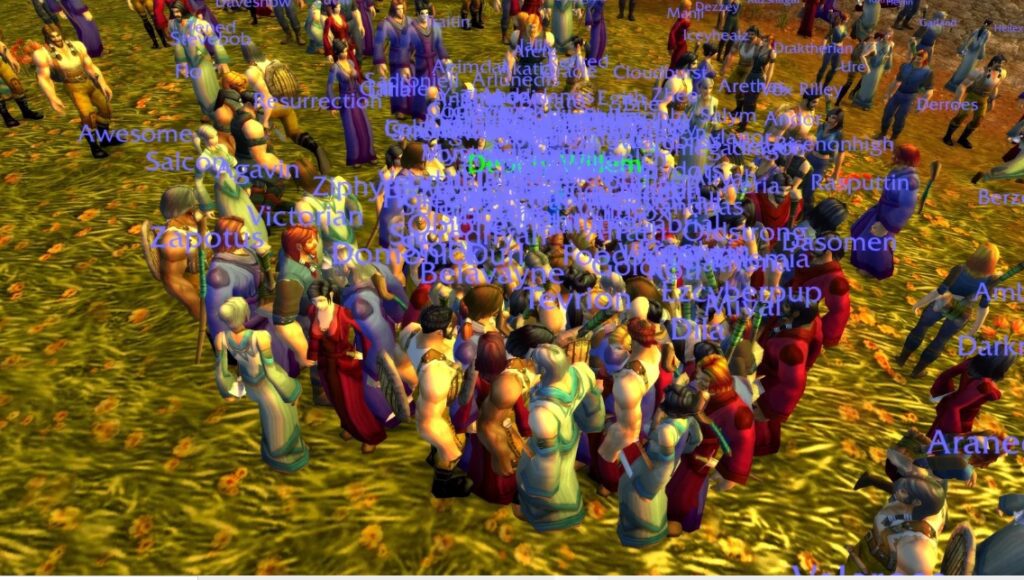Takeaway
In the realm of virtual world game programming, the ability to manage complex architecture and logic is paramount. This article delves into the intricacies of designing scalable systems, optimizing performance, and ensuring seamless user experiences in expansive virtual environments. By examining real-world examples and leveraging current research, we aim to equip game developers with the knowledge necessary to tackle the challenges inherent in virtual world game development.
The evolution of virtual worlds has transformed the landscape of gaming, creating immersive experiences that engage players in ways previously thought impossible. As a game programmer, understanding the underlying architecture and logic that supports these environments is crucial. This article will explore the technical aspects of virtual world game programming, focusing on complex architecture, logic handling, and performance optimization.
Understanding Virtual World Architecture
Virtual worlds are intricate ecosystems that require a robust architecture to support their vastness and complexity. The architecture of a virtual world can be broken down into several key components: client-server architecture, data management, and network communication.
Client-Server Architecture
At the core of most virtual worlds is a client-server architecture. This model separates the game client, which runs on the player’s device, from the game server, which manages the game state and interactions. The server is responsible for maintaining a consistent world state, handling player interactions, and ensuring that all clients receive the same information.
For instance, in massively multiplayer online games (MMOs) like “World of Warcraft,” the server architecture is designed to handle thousands of concurrent players. According to a report by Statista in 2021, “World of Warcraft” had over 4.8 million subscribers, necessitating a highly scalable server infrastructure. This is achieved through load balancing, where multiple servers share the workload, and sharding, where the game world is divided into smaller, manageable sections.
 Thousands of players interact in real time in MMOs like World of Warcraft.
Thousands of players interact in real time in MMOs like World of Warcraft.
Data Management
Data management is another critical aspect of virtual world architecture. Game developers must efficiently store and retrieve vast amounts of data, including player profiles, inventory items, and world states. A common approach is to use a combination of relational databases and NoSQL databases. Relational databases, such as MySQL, are effective for structured data, while NoSQL databases, like MongoDB, excel at handling unstructured data.
For example, “Second Life,” a pioneering virtual world, utilizes a combination of MySQL for user data and a custom-built database for in-world objects. This hybrid approach allows for efficient data retrieval and manipulation, essential for maintaining a dynamic and interactive environment.
Logic Handling in Virtual Worlds
Logic handling in virtual worlds involves managing game mechanics, player interactions, and event systems. This requires a deep understanding of programming paradigms and design patterns.
Event-Driven Programming
Event-driven programming is a prevalent paradigm in virtual world development. In this model, the game responds to events triggered by player actions or system processes. For instance, when a player interacts with an object, an event is generated, and the corresponding logic is executed. This approach allows for a decoupled architecture, where different components can operate independently while still communicating effectively.
In “Fortnite,” Epic Games employs an event-driven architecture to manage in-game events, such as player eliminations or item pickups. This system allows for real-time updates and interactions, enhancing the overall player experience. According to a report by Newzoo in 2022, “Fortnite” generated over $9 billion in revenue since its launch, showcasing the effectiveness of its underlying logic handling.
 Player eliminations and updates are managed by event-driven architecture in “Fortnite”.
Player eliminations and updates are managed by event-driven architecture in “Fortnite”.
Finite State Machines
Finite state machines (FSMs) are another essential tool for managing game logic. FSMs allow developers to define a set of states and transitions between those states, making it easier to manage complex behaviors. For example, an NPC (non-player character) may have states such as “idle,” “patrolling,” and “attacking.” By using an FSM, developers can clearly define the conditions under which the NPC transitions between these states, resulting in more predictable and manageable behavior.
In “The Legend of Zelda: Breath of the Wild,” NPCs utilize FSMs to create dynamic interactions with players. The game’s AI system allows NPCs to react to player actions, enhancing immersion and engagement. Research by the International Journal of Computer Games Technology (2020) highlights the effectiveness of FSMs in creating responsive AI behaviors in games.
Performance Optimization Techniques
As virtual worlds grow in complexity, performance optimization becomes increasingly critical. Developers must ensure that their games run smoothly across a variety of hardware configurations while maintaining high-quality graphics and gameplay.
Level of Detail (LOD)
One effective optimization technique is the use of Level of Detail (LOD) models. LOD involves creating multiple versions of a 3D model with varying levels of detail. As the player moves closer to an object, a higher-detail model is rendered, while lower-detail models are used when the object is farther away. This approach reduces the rendering load on the GPU, improving performance without sacrificing visual quality.
In “Grand Theft Auto V,” Rockstar Games employs LOD techniques to manage the vast open world. By dynamically adjusting the level of detail based on the player’s distance from objects, the game maintains a high frame rate while delivering stunning visuals. According to a performance analysis by Digital Foundry (2021), “GTA V” achieves an average frame rate of 60 FPS on high-end hardware, demonstrating the effectiveness of LOD in optimizing performance.
Asynchronous Loading
Asynchronous loading is another critical optimization technique. This method allows developers to load game assets in the background while the player is engaged in other activities, reducing load times and improving the overall experience. For example, in “The Elder Scrolls V: Skyrim,” Bethesda implemented asynchronous loading to ensure that players could explore the vast open world without experiencing significant delays.
A study by the Journal of Game Development (2021) found that asynchronous loading techniques can reduce load times by up to 50%, significantly enhancing player satisfaction and retention rates.
Conclusion
In conclusion, the role of a virtual world game programmer is multifaceted, requiring a deep understanding of complex architecture and logic handling. By leveraging client-server architecture, effective data management, event-driven programming, and performance optimization techniques, developers can create immersive and engaging virtual worlds. Real-world examples from successful games illustrate the importance of these concepts in delivering high-quality gaming experiences. As the gaming industry continues to evolve, staying abreast of these technical advancements will be crucial for developers aiming to push the boundaries of virtual world gaming.
Key takeaways include the significance of robust architecture, the effectiveness of event-driven programming and finite state machines, and the necessity of performance optimization techniques such as LOD and asynchronous loading. By mastering these elements, game programmers can navigate the complexities of virtual world development and create experiences that captivate players worldwide.

